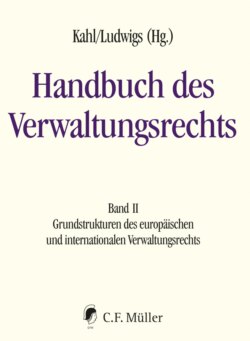| 1. | The European Composite Administration describes the interconnectedness between the administrations of the European Union and its Member States (par. 2). It consists of cooperative and hierarchical elements (par. 4). |
| 2. | The European Composite Administration appears to be an enforcement, guidance, and supervisory union (Vollzugs-, Lenkungs- und Aufsichtsverbund). It is also a regulatory and planning union (Regulierungs- und Planungsverbund) and furthermore serves to gather and distribute information (Informationsverbund) (par. 6). Beyond these functions, it is useful to further differentiate the categories of the Composite Administration’s processes (par. 7). In addition, there are new systems for administrative cooperation in the enforcement of Union law. There are four basic models, which are reflected in different forms by the relevant EU secondary law and which cover both vertical and horizontal interconnected structures (par. 8). |
| 3. | The European Composite Administration does not constitute an autonomous category but combines elements of the direct and indirect enforcement of EU administrative law (par. 9). |
| 4. | The concept of a composite administration has been developed since the 2000s and can now be observed in numerous reference areas (par. 10). |
| 5. | The European Composite Administration must be distinguished from other terms such as Europeanisation, union of states and constitutions (Staaten- und Verfassungsverbund), network, and the European administrative space. Contrary to one view in scholarship, the regulatory union does not constitute an aliud but is a subset of the European Composite Administration (par. 11 et seqq.). |
| 6. | The European Composite Administration serves to implement EU law effectively and uniformly as well as to enable the exchange of information and to develop common European public interests. In addition, reciprocal review on both levels involved should lead to greater acceptance of the decisions taken (par. 17). |
| 7. | The main actors in the European Composite Administration are the EU Commission and the national authorities. Committees, networks, and European offices as well as agencies are grouped around this centre (Kern-Schalen-Modell). Moreover, private actors are also involved in the administrative structure (par. 18 et seqq.). |
| 8. | In addition to implementing acts according to Art. 291 (2) TFEU, the European Composite Administration’s typical forms of action include, above all, the executive concretisation of norms by means of soft law and guidelines as well as consensual instruments and transnational administrative acts. The legality of such transnational administrative acts is judged by the law of their home country. Despite some criticism about a lack of democratic legitimacy, transnational administrative acts are not only legitimised by their home countries. Instead, the use of secondary EU-law legitimises them throughout the entire Union (par. 24 et seqq.). |
| 9. | The variety of instruments used also reflects the diversity of the European Composite Administration. These encompass the exchange of information and mutual assistance, rights of approval and veto, powers to issue instructions and to derogate from defined competence (Selbsteintrittsrecht) as well as normative powers of action (par. 28 et seqq.). |
| 10. | Like in administrative enforcement, there is a dualist system of legal protection. According to the principle of procedural separation, the power of review is strictly assigned to one of the levels. According to the principle of separation under liability law, only the responsible authority is liable for damages. However, it remains to be seen how these principles will deal with new phenomena, such as the ECB’s application of national law in the European Banking Union (par. 38 et seqq.). |
| 11. | Transparency, clear responsibilities, sufficient procedural rights, and legal protection as well as democratic legitimacy and the maintenance of efficiency are demands that the European Composite Administration will have to confront in the future. Moreover, a comparison to an increasingly evolving composite administration in international law is still pending. One future research task will be to trace this phenomenon more closely on the basis of concrete reference fields and to gain further insights from the comparison between European and international interconnected structures in order to master the challenges of an increasingly complex composite administration (par. 42 et seqq.). |
